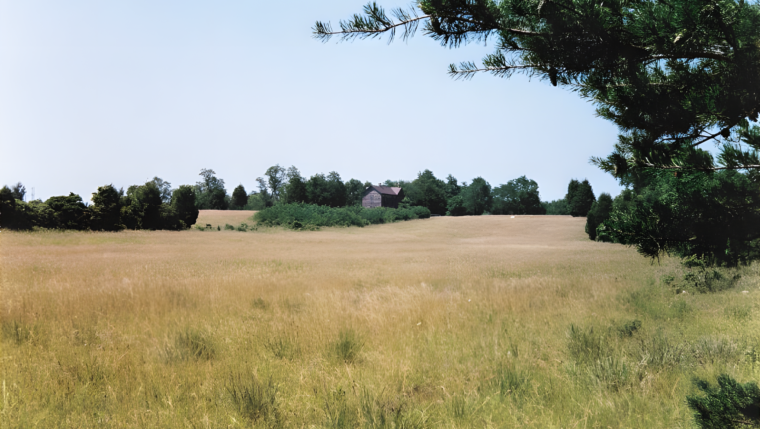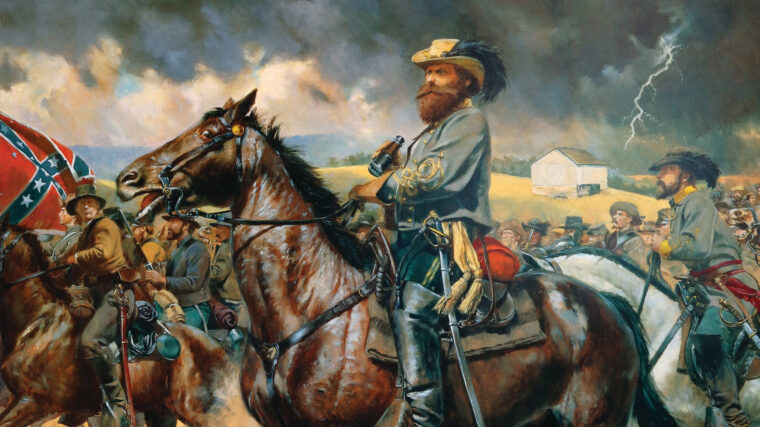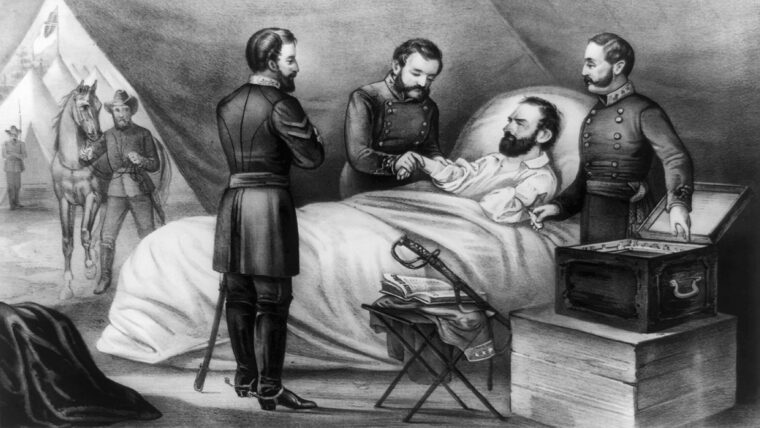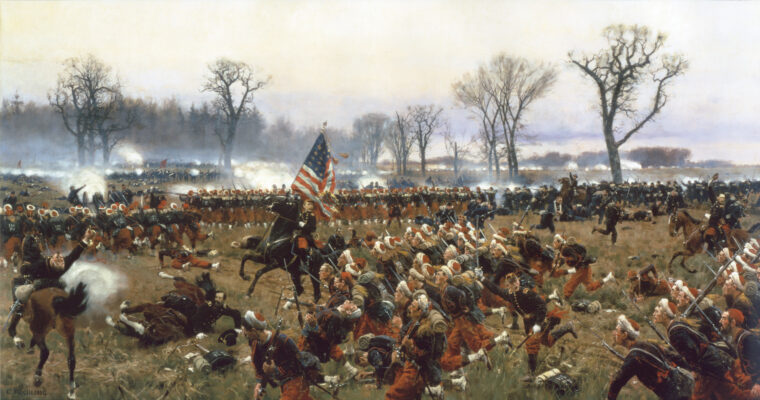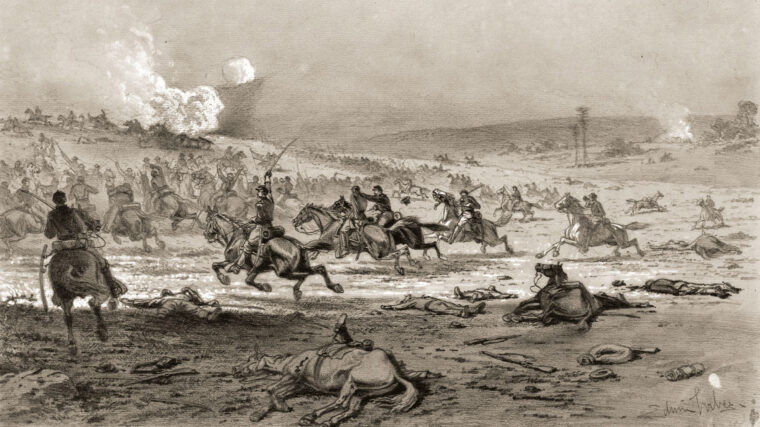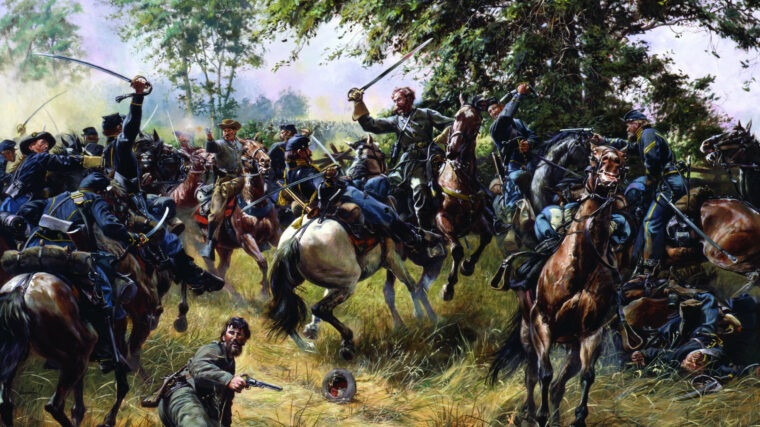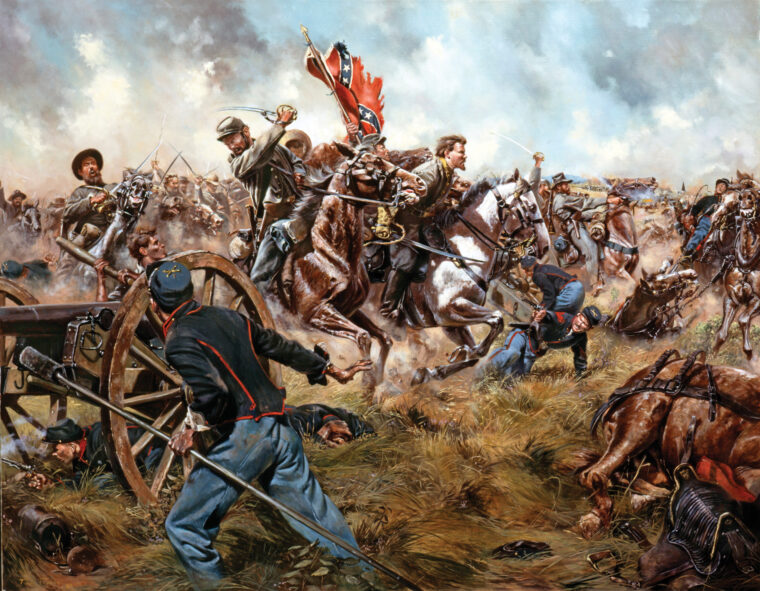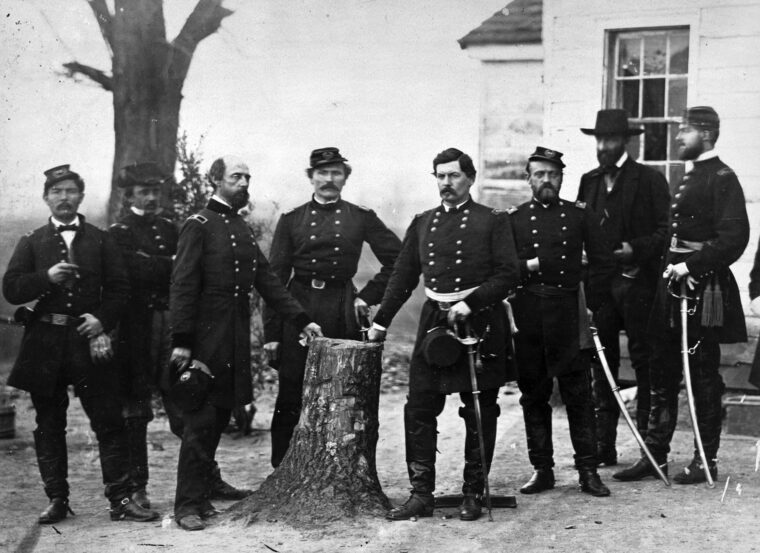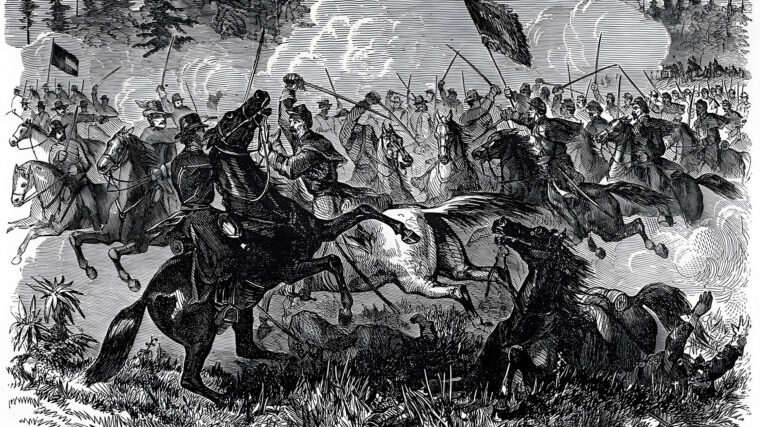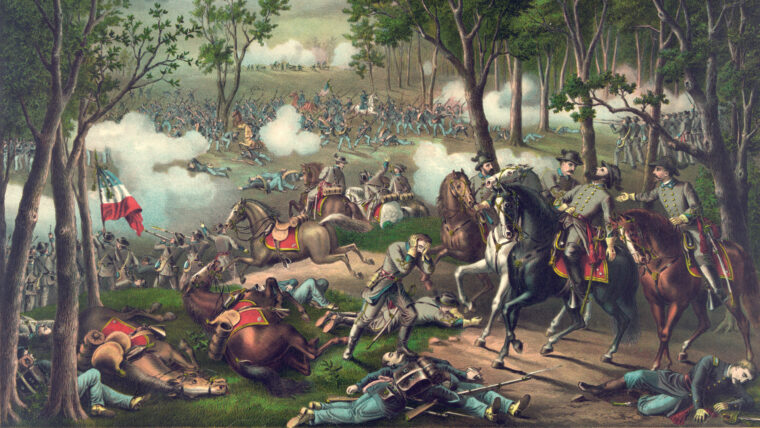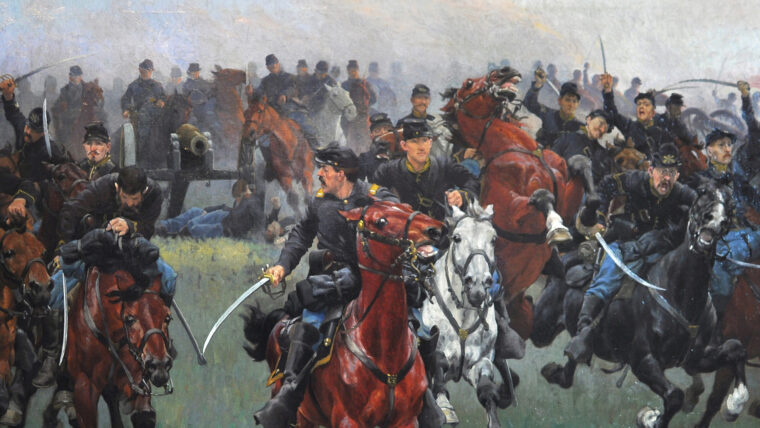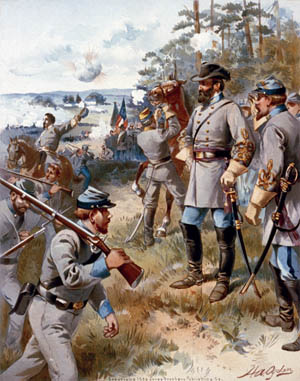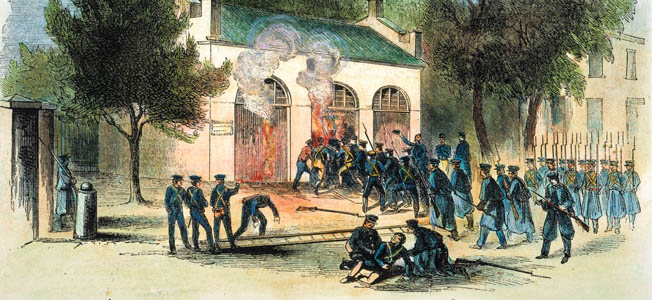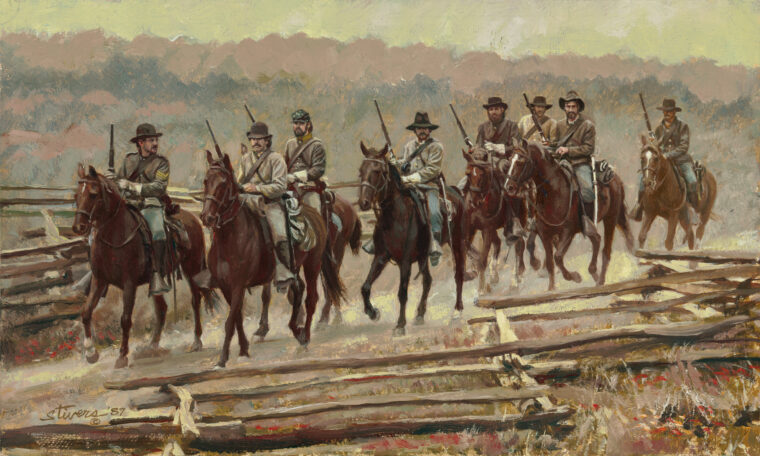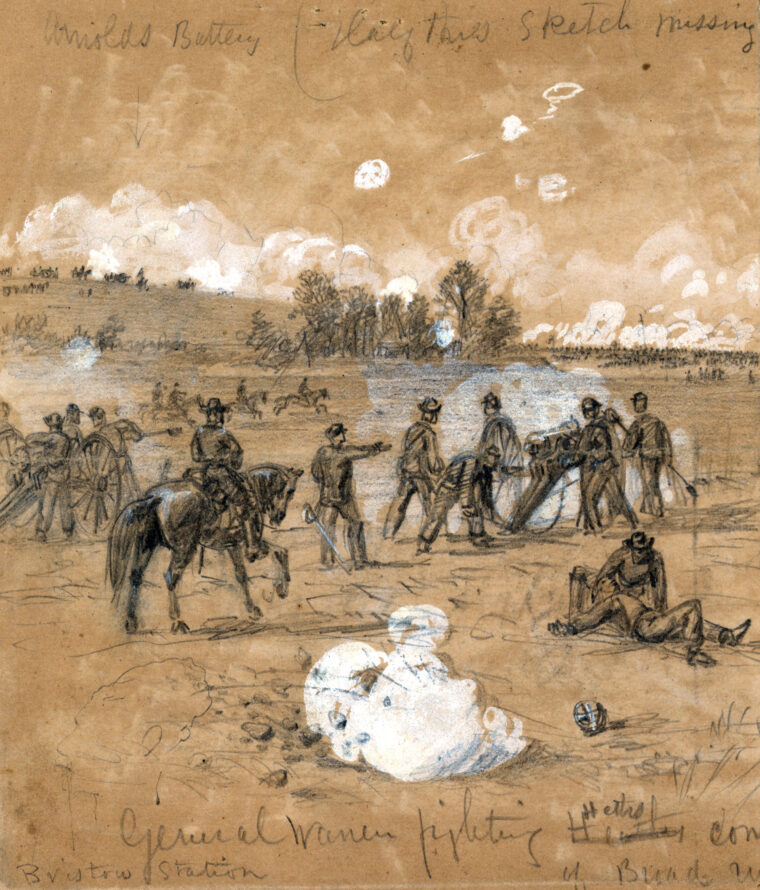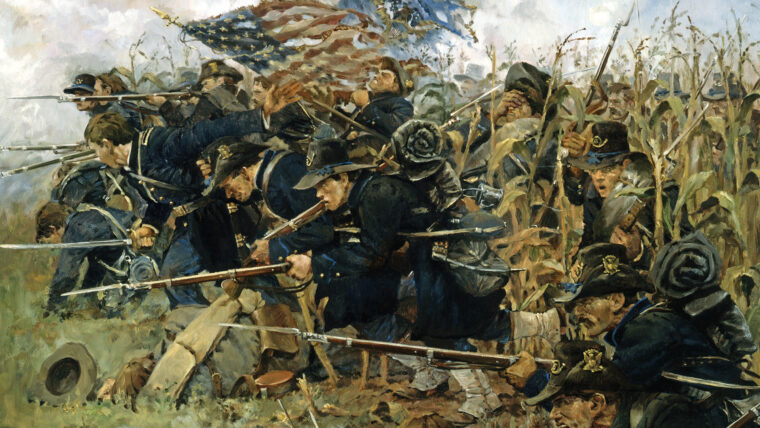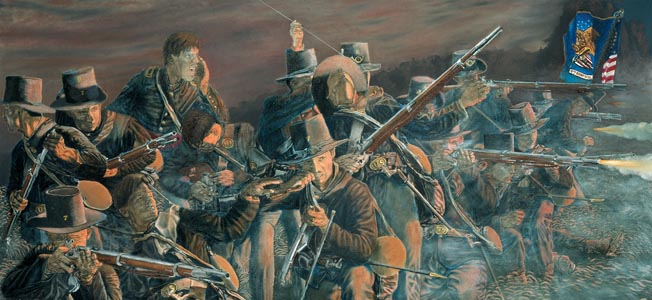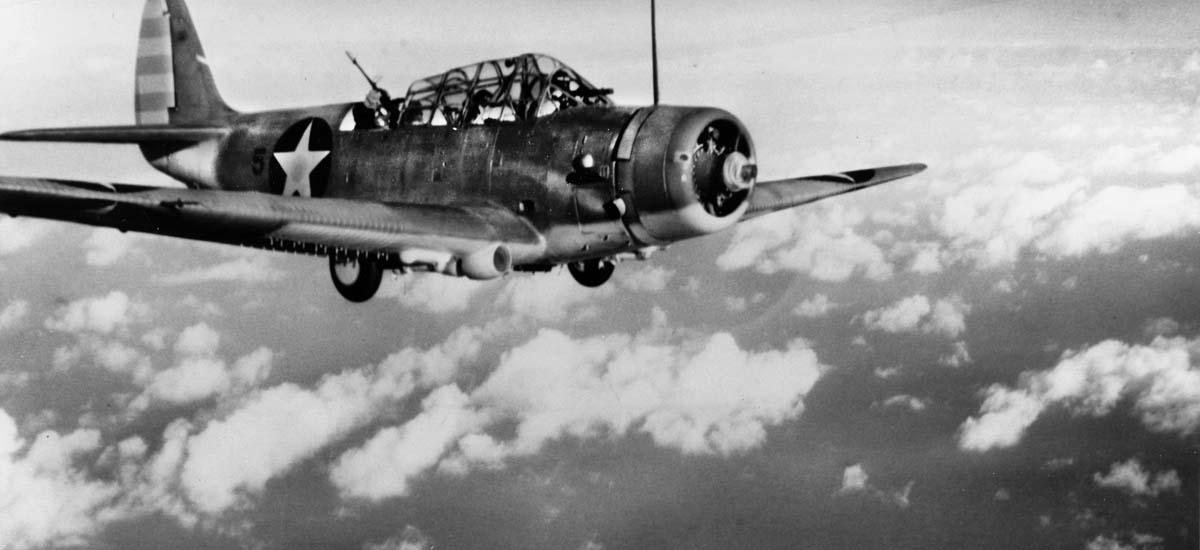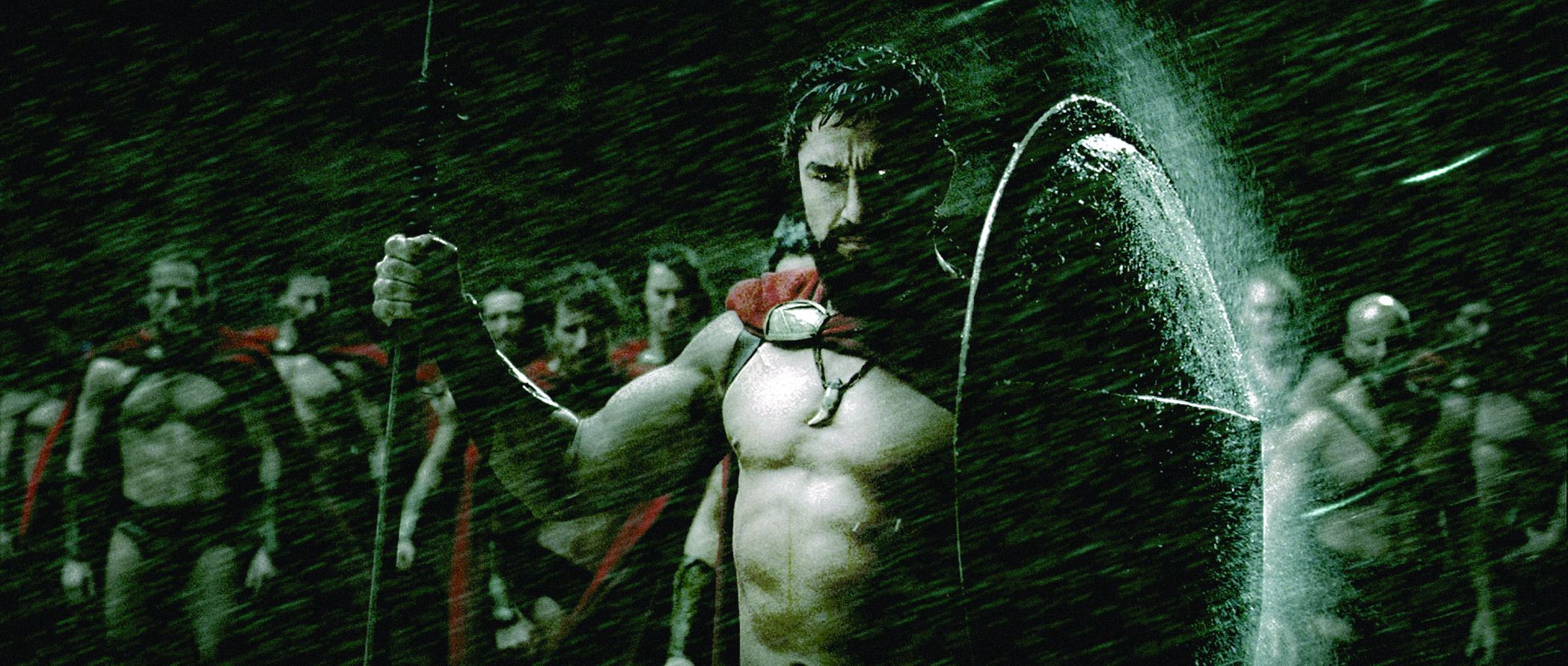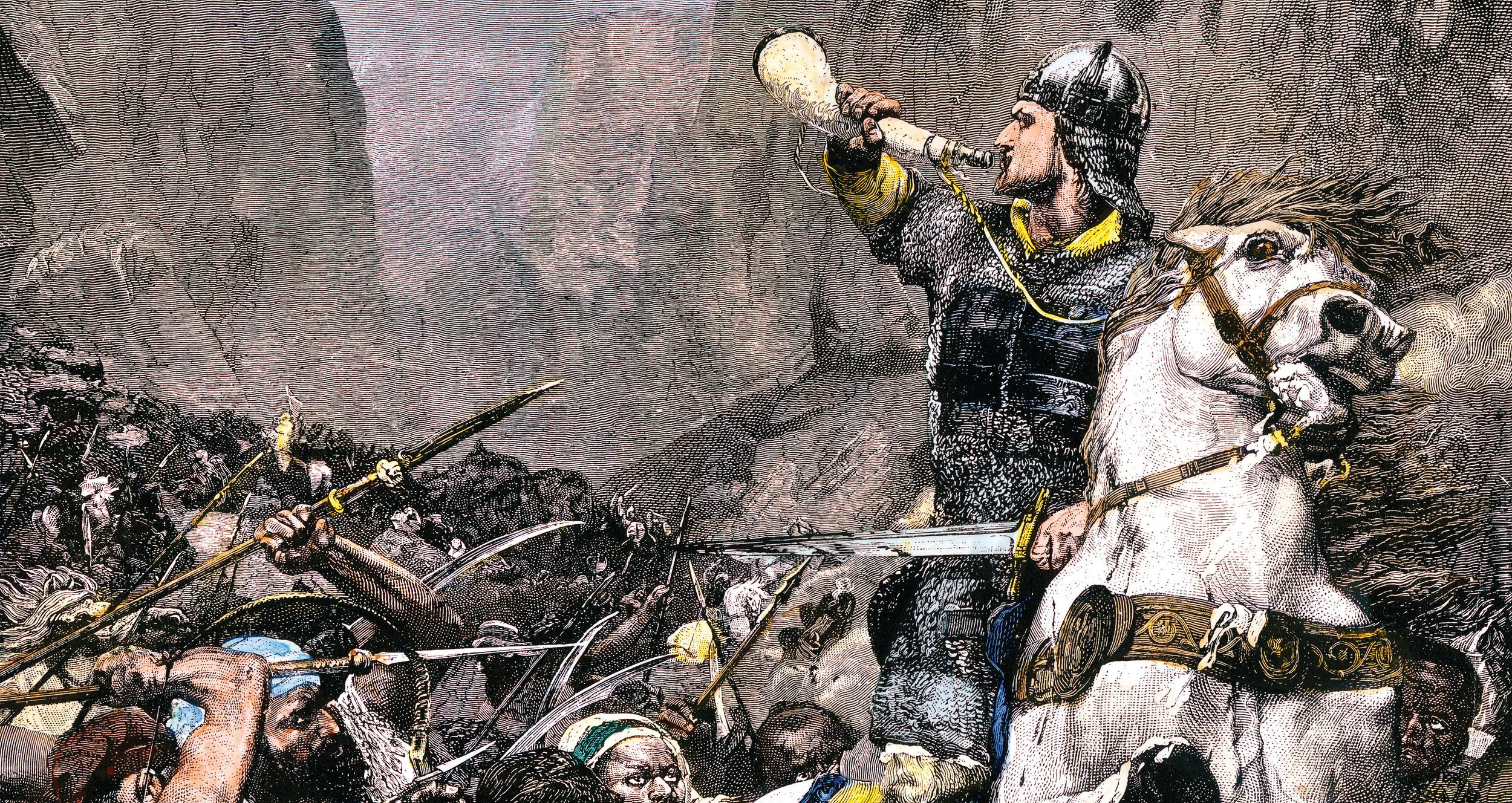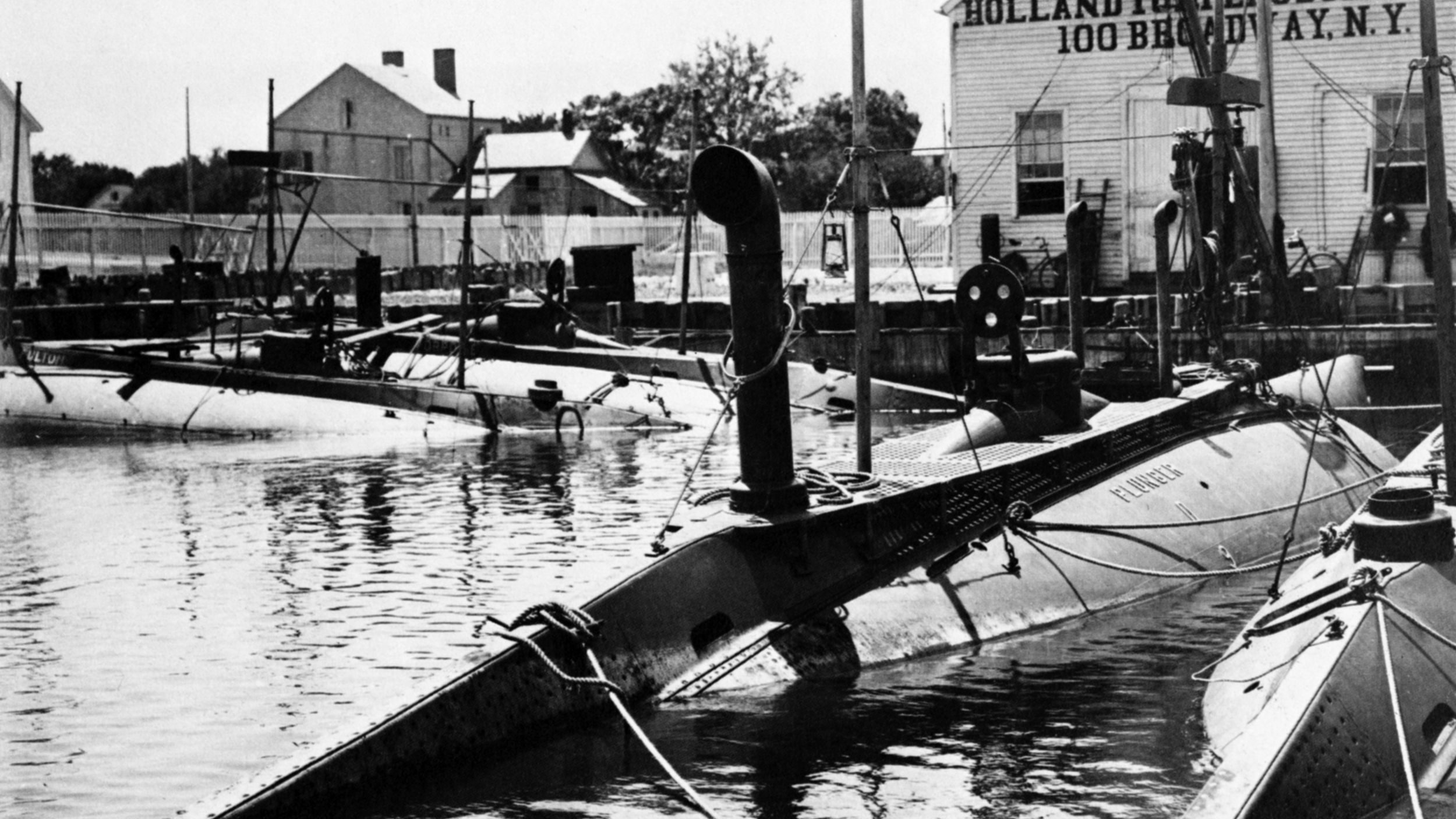J.E.B. Stuart
General J.E.B. Stuart was commander of the Cavalry Corps of General Robert E. Lee’s Confederate Army of Northern Virginia for much of the Civil War. J.E.B. Stuart was superb in the role, providing the army with valuable reconnaissance as its eyes and ears, while deftly supporting battlefield operations. J.E.B. Stuart was the ideal of the “cavalier,” dashing in full uniform with a rakish plumed hat. Stuart’s reputation, however, was tarnished during the Gettysburg Campaign, in which he lost contact with General Lee for several crucial days. Stuart was mortally wounded at the Battle of Yellow Tavern and died at the age of 31 on May 12, 1864.
